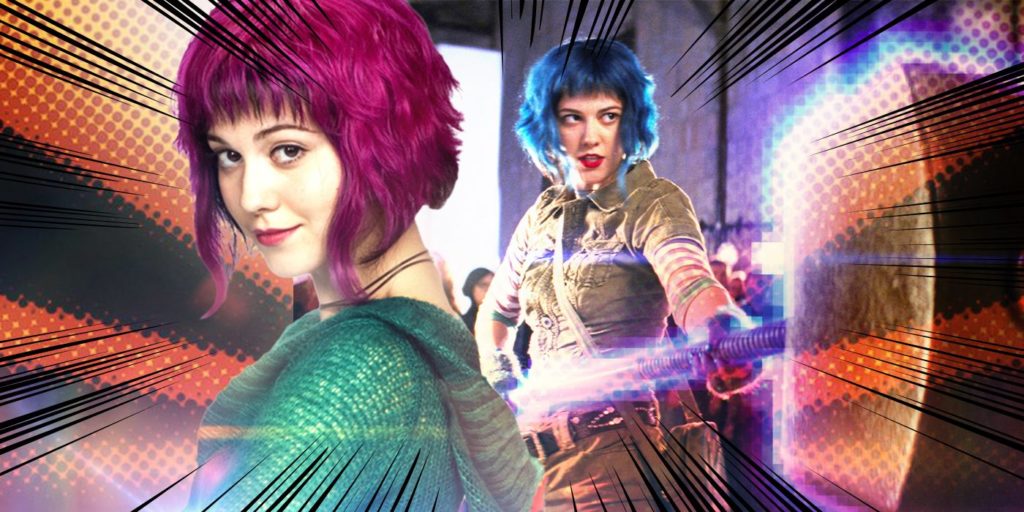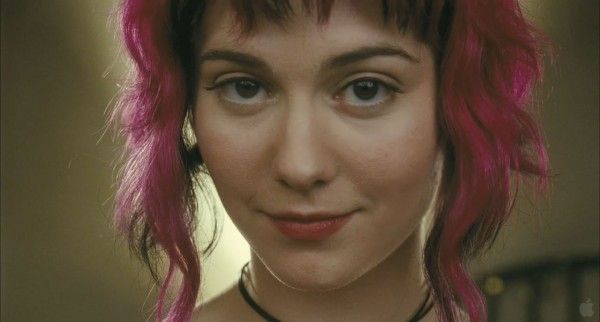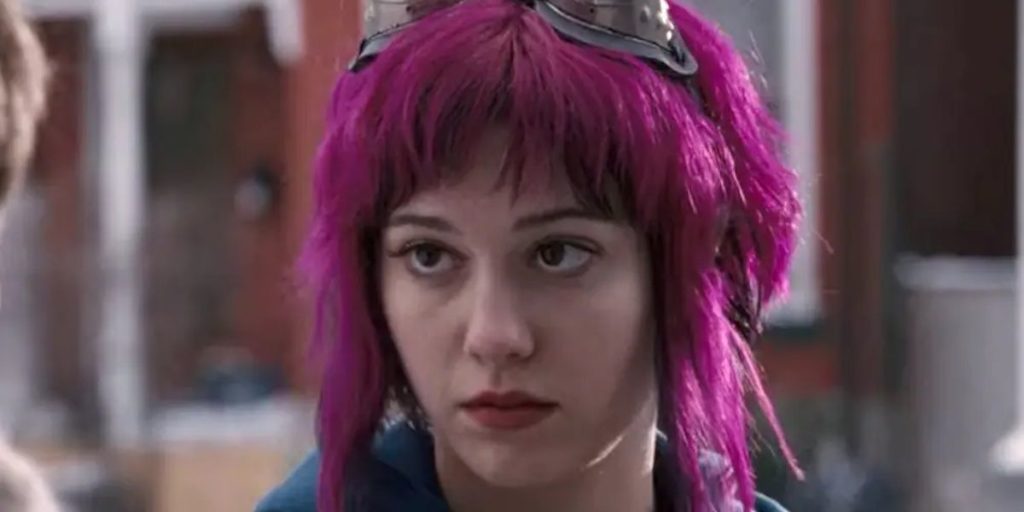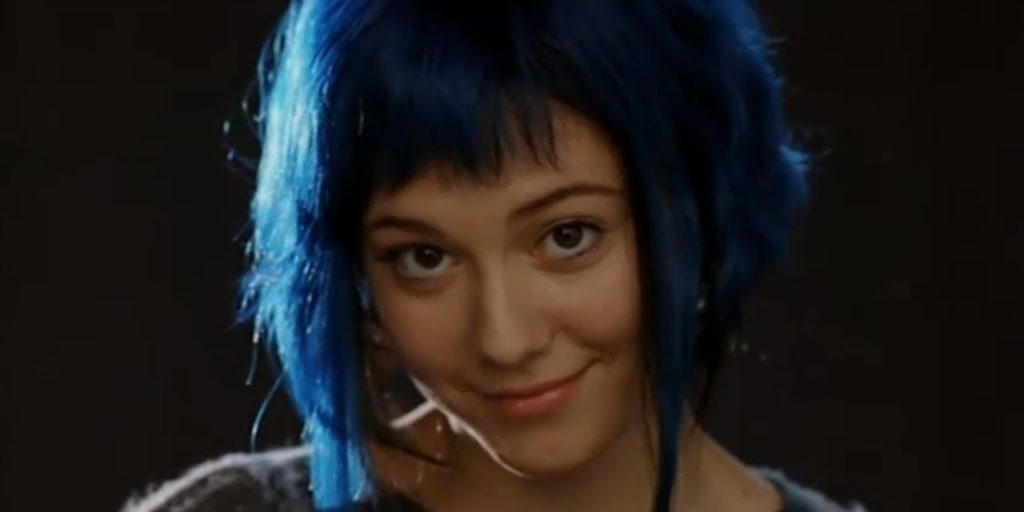A common subject in movies is a woman saving a man’s life. Instead of freeing themselves from their painfully banal world, guys wait for women to come along and rescue them. Consequently, the “Manic Pixie Dream Girl” was born (MPDG). Manic Pixie Dream Girl is a word that was created by film reviewer Nathan Rabbin. The phrase, in his words, refers to a “bubbly, shallow cinematic monster who exists entirely in the fevered imaginations of sensitive writer-directors to teach broodingly spiritual young men to embrace life and its limitless mysteries and experiences.” Another societal construct where the woman is there to fit the male and his interests is that. We enter a universe in Scott Pilgrim vs. the World, directed by Edgar Wright, that dissects and refutes the notion that Mary Elizabeth Winstead’s character Ramona Flowers, the love interest, is a Manic Pixie Dream Girl.
Ramona Flowers initially appears to Michael Cera’s Scott, the main character, in a dream and appears to be the MPDG at its most extreme. She appears to him in his dream, although she is vaguely visible. She has captured his attention more than any other person recently. Scott views her role as being just that because she embodies the MPDG brand and is in fact a girl he made up. Cera makes Scott Pilgrim endearing and appealing, but in real life, this kind of guy would not be very attractive. He lacks drive, plays in a bad band, and still has feelings for his ex-girlfriend of a year. This casts Scott in the role of the “brooding,” obedient rescuee who waits about for someone like Ramona to accomplish the saving and treats her as the MPDG would.
Scott wants Ramona to fill a specific role in his life, which Ramona is aware of. She is aware that she cannot and does not wish to perform this function. She tells Scott that her ex-boyfriends have banded together to form the League of Ramona’s Evil Exes. The goal of this league is to have Ramona’s current boyfriend or girlfriend compete against all of her prior partners in order to prove that they deserve to be with her. Someone literally fighting for someone else’s love puts the person being fought over in a powerful position. As a result, people tend to think of them as some type of powerful entity who belongs exclusively with the best; the victor in the conflict with the ex. Because of the pedestal Ramona’s previous relationships have placed her on, it is expected that she will be a guiding influence in the lives of her partners, possibly even saving them. This unique portrayal of Ramona is what gives her MPDG traits. Ramona is aware of the position she has had, but she doesn’t care much about it and may even be a little embarrassed of it. She doesn’t take advantage of it since she doesn’t want people to depend on her to fix their problems. As he navigates the difficult discussions and conflicts between himself and the ex-wives, Scott discovers this trait as well as many others about her. Scott then defeats each ex, revealing Ramona’s true character and sharing it with everyone.
In addition to knowing more about Ramona, using the stories of each specific relationship helps Scott focus his fighting abilities to locate the weakness to overcome each ex. Each time Scott faces off against an ex, he not only obtains more knowledge about the ex in question but also himself. Ramona’s claim to be an MPDG is undermined by Scott’s decision to learn his own lessons and ideals, such as self-respect and true love, independently of Ramona, which is the opposite of what an MPDG would have done. Due of his awareness of Ramona’s troubles with her ex-boyfriends and how they have affected her, Scott also develops sympathy for her. Scott’s expression of sympathy for Ramona portrays her as a unique character. versus someone who only exists in reference to and for him.
Ramona did play a role in Scott’s character development, but in a different way than a normal manic pixie dream girl would have because she didn’t do it for him directly. Ramona would have permitted Scott to shape her and use her for how he exactly needed her in his life if she were a real manic pixie dream girl. Ramona, on the other hand, approached him and presented herself to him exactly as she was. Ramona was so readily categorised by her ex-boyfriends, but when Scott entered the picture, she made it a point to avoid allowing him to do the same.
At first look, Ramona’s significance for Scott appears to be directly linked to her appearance. She is Scott’s literal dream girl, and he wants her to make his romantic life complete. She gradually assumes a different role that deviates from his expectations of her as time goes on. Instead, she makes Scott mature and confront his history and present by being her unrepentant, self-serving self. Compared to the original manic pixie dream girl, this gives her a new, deeper significance. As it disproves Scott’s original assumptions about Ramona Flowers, Scott Pilgrim vs. the World subverts the tropes of classic rom-coms. She transcends the manic pixie dream girl moniker and alters the value and role she first played.




